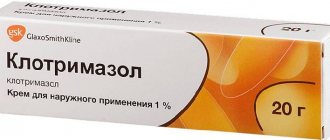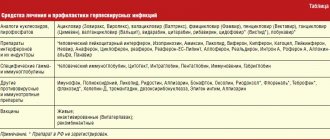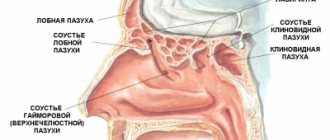Pharmacodynamics and pharmacokinetics
purine derivative , theophylline, is a bronchodilator. The drug inhibits phosphodiesterase , thereby increasing the accumulation of cAMP , helping to block purine receptors , reducing the transport of calcium ions through cell membrane channels, and reducing the contractility of smooth muscles . By relaxing the muscles of the bronchi and blood vessels of the circulatory system (especially the vessels of the kidneys, skin and brain), it exhibits a vasodilating peripheral effect, increases blood flow in the kidneys, and has moderate diuretic It is a stabilizer of mast cell membranes and also inhibits the release of mediators of allergic manifestations .
Strengthens mucociliary clearance , improves diaphragmatic breathing , increases the functionality of the intercostal and respiratory muscles, and stimulates the respiratory center. It lowers the carbon dioxide content in the blood and normalizes the flow of oxygen. In conditions of hypokalemia, it enhances ventilation of the lungs.
Increases coronary blood flow , stimulates the activity of the heart muscle , increases the strength and frequency of its contractions, and reduces the need for oxygen. Reduces vascular resistance of the lungs and pressure in the pulmonary circulation . Expands the bile ducts (extrahepatic). Prevents platelet aggregation by suppressing the process of activation of prostaglandin E2-alpha and platelets . Increases erythrocyte resistance to deformation, having a beneficial effect on blood rheological parameters . Inhibits the process of blood clot and also normalizes microcirculation .
Due to the delayed release of the active ingredient, the plasma therapeutic concentration of theophylline is observed after 3-5 hours and persists for 10-12 hours, thereby, when taking the drug twice a day, ensuring its constant effective concentration in the blood.
It has fairly good absorption from the gastrointestinal tract and bioavailability of about 88-100%. Communication with plasma proteins is approximately 60%. TCmax varies at 6 hours. Penetrates the placental barrier and is detected in the milk of a nursing mother.
90% of the drug is metabolized in the liver with the participation of certain cytochrome P450 enzymes (the most significant CYP1A2), with the release of the main metabolites 3-methylxanthine and 1,3-dimethyluric acid.
Metabolites of the drug, as well as 7-13% (in childhood up to 50%) of unchanged substance, are excreted by the kidneys. In newborns, due to incomplete metabolism, most of the drug is excreted in the form of caffeine .
In non-smoking patients, T1/2 is 6-12 hours, while in nicotine-dependent people it decreases to 4-5 hours. With alcoholism , pathologies of the liver and kidneys, T1/2 lengthens. With CHF , respiratory and liver failure, severe fever , viral infections , as well as under the age of 12 months and over 55 years, the total clearance is reduced.
Theophylline
Inside, with a sufficient amount of liquid. The average dose for adults and children over 14 years of age is 300 mg 2 times a day (at the rate of 10-15 mg/kg/day in 2 doses with an interval of 12 hours), if necessary - 300 mg 3 times a day or 500 mg once, before bed (in the case of predominantly night and morning attacks).
For non-smoking adult patients weighing 60 kg or more, the initial dose is 200 mg, taken in the evening, then 200 mg 2 times a day. In patients weighing less than 60 kg, the initial single dose is 100 mg in the evening, then 100 mg 2 times a day.
Treatment with the drug begins with smaller doses, which are gradually, with an interval of 1-2 days, increased (by 100-200 mg/day) until the maximum therapeutic effect is obtained; if tolerated poorly, they are reduced. The dose depends on the nature of the disease, age and body weight of the patient.
If it is necessary to prescribe in large doses, treatment is carried out under the control of the concentration of the drug in the blood (therapeutic concentration - within 10-15 mcg/ml): at a concentration of 20-25 mcg/ml, it is necessary to reduce the daily dose by 10%; 25-30 mcg/ml - by 25%; above 30 mcg/ml - the daily dose is reduced by 2 times. Repeated control is carried out after 3 days. If the concentration is too low, the daily dose is increased by 25% at 3-day intervals. When the patient's condition stabilizes while taking high doses, it is necessary to carry out monitoring every 6-12 months.
Maintenance dose for adults with body weight above 60 kg - 600 mg / day, less than 60 kg - 400 mg / day.
For smokers with a body weight of more than 60 kg, the daily dose of the drug is 600 mg in the evening and 300 mg in the morning, with a body weight of less than 60 kg - 400 mg in the evening and 200 mg in the morning.
For patients with cardiovascular diseases and liver dysfunction: with a body weight of more than 60 kg, the daily dose is 400 mg, with a body weight of less than 60 kg - 200 mg.
A reduction in the daily dose is required in patients with severe damage to the heart, liver, viral infections, and in elderly patients.
Children weighing up to 30 kg - 10-20 mg/kg/day (in 2 doses); children from 3 to 7 years old - 0.1 g; from 7 to 12 years - 0.2 g 2 times a day.
For prolonged forms (retard capsules): for non-smoking adults weighing more than 60 kg, the initial dose is 375 mg/day in 1 dose before the evening meal. Then the dose is increased by 250-375 mg every 2 days until maintenance (on average - 750 mg/day in 1 dose in the evening). For smoking patients and people with increased metabolism of the drug, the initial dose is 375 mg, and the maintenance dose can be increased to 1.08-1.26 g/day (2/3 doses are taken in the evening, 1/3 in the morning).
In persons with reduced clearance of the drug, the initial dose is 250 mg/day, which is then increased by 250 mg every 2 days to a maintenance dose of 500 mg/day in 1 dose in the evening, and in persons weighing less than 60 kg—250 mg/day. Children 6-12 years old are prescribed 250 mg capsules. The daily dose for children 6-8 years old (with a body weight of 20-30 kg) is 400-600 mg, the frequency of administration is 2 times a day; for children 8-12 years old (with a body weight of 30-40 kg) - 600-800 mg, frequency of administration - 3 times a day.
Children aged 12-16 years (body weight 40-60 kg) are prescribed 375 mg capsules. The daily dose is 0.72-1.8 g, the frequency is 2-3 times a day.
The effect of the drug is fully manifested 3-4 days after the start of treatment
Indications for use
Broncho-obstructive syndrome developed for various reasons:
- bronchial asthma (for asthma of physical exertion as a drug of choice, as well as for other forms of asthma as an additional drug);
- chronic obstructive bronchitis
- emphysema;
- cor pulmonale;
- pulmonary hypertension;
- edema syndrome due to kidney disease (in complex treatment);
- sleep apnea.
Contraindications
- gastritis (with high acidity);
- periods of exacerbation of gastrointestinal ulcer ;
- gastrointestinal bleeding;
- epilepsy;
- arterial hypo- or severe hypertension;
- hemorrhagic stroke;
- severe tachyarrhythmias ;
- retinal hemorrhage
- age up to 12 years (for non-extended forms up to 3 years);
- hypersensitivity to theophylline , as well as other xanthine ( theobromine , pentoxifylline, caffeine).
Carefully:
- severe manifestations of coronary insufficiency , including angina pectoris and the acute phase of myocardial infarction ;
- obstructive hypertrophic cardiomyopathy ;
- atherosclerosis ;
- chronic heart failure;
- frequent ventricular extrasystole ;
- increased convulsive readiness ;
- kidney or liver failure;
- gastrointestinal ulcer (diagnosed in the past);
- recent gastrointestinal bleeding;
- prolonged hyperthermia ;
- thyrotoxicosis or hypothyroidism ;
- gastroesophageal reflux;
- BPH;
- periods of breastfeeding and pregnancy;
- elderly or children's age.
Side effects
CNS:
- excitation;
- dizziness;
- anxiety;
- headache;
- irritability;
- insomnia;
- tremor.
The cardiovascular system:
- tachycardia (also observed in the fetus when using Theophylline in the third trimester);
- heartbeat;
- arrhythmias;
- cardialgia;
- decreased blood pressure;
- more frequent attacks of angina .
Digestive organs:
- gastralgia;
- diarrhea;
- heartburn;
- nausea;
- gastroesophageal reflux;
- vomit;
- exacerbation of peptic ulcer disease;
- decreased appetite (in case of long-term use).
Allergic manifestations:
- fever;
- rash and itching of the skin.
Other:
- tachypnea;
- chest pain;
- hot flashes to the face;
- hematuria;
- albuminuria;
- hypoglycemia;
- increased sweating;
- increased diuresis.
As a rule, when theophylline doses are lowered, side effects decrease.
Theophylline, instructions for use
Instructions for use of long-acting theophylline involve individual selection of doses of the drug.
On average, the initial oral daily dose is 400 mg. If the patient tolerates this dose well, it can be increased one-time by approximately 25%. It is recommended to increase doses every 2-3 days until the best therapeutic effect is achieved.
Without monitoring the content of theophylline in the blood, it is possible to take its maximum daily doses, which are: 18 mg/kg for ages 12-16 years and 13 mg/kg for ages after 16 years.
In cases where the use of the above doses is ineffective (requires an increase in dosage) or causes toxic symptoms , further therapy should be carried out under constant monitoring of theophylline in the blood. Optimal therapeutic doses are considered to be doses at the level of 10-20 mcg/ml. theophylline content is ineffective, and more does not lead to a significant increase in its effect, while the risk of side effects increases significantly.
Theophylline is a drug from the methylxanthine group used in the treatment of bronchial asthma, chronic obstructive pulmonary disease, emphysema and apnea in newborns.
Synonyms Russian
“Ventax”, “Theotard”, “Spofillin”, “Theostat”, “Afonilum”, “Diffumal”, “Retafil”, “Teopek”, “Eufilong”, 1,3-dimethylxanthine.
English synonyms
Theophylline, Choledyl, Oxtriphylline, Slo-Phyllin, Slophylline, Anhydrous, Somophyllin, Tedral, Theo-Dur, Theodur, Theophyl.
Research method
Polarization fluoroimmunoassay (PFIA).
Units
µg/ml (micrograms per milliliter).
What biomaterial can be used for research?
Venous blood.
How to properly prepare for research?
- Do not eat for 2-3 hours before the test; you can drink clean still water.
- Do not smoke for 30 minutes before the test.
General information about the study
Theophylline is a drug from the group of methylxanthines, alkaloids of plant origin. It is found in tea, mate, cocoa. It is used to relieve asthma symptoms and prevent the development of bronchospasm. Thanks to various mechanisms, theophylline dilates the bronchi, relaxes the smooth muscles of internal organs, gives an anti-inflammatory effect through stimulation of the secretion of interleukin-10 and a decrease in the level of allergy mediators, increases the tone of the respiratory muscles, dilates the blood vessels of the lungs, improves the rheological properties of blood (fluidity, viscosity), enhances the anti-inflammatory effect corticosteroids, increases renal blood flow and has a moderate diuretic effect.
Theophylline is prescribed orally or intravenously in the form of aminophylline (aminophylline, a compound of theophylline with ethylenediamine). After oral administration, it is almost completely absorbed from the gastrointestinal tract. In the blood it binds to proteins by 40-50%. The therapeutic concentration of theophylline in adults is in the range of 10-20 mcg/ml. The drug is transformed in the liver by the cytochrome P450 system with the formation of inactive metabolites, which are then excreted in the urine. In children, up to 50% of the drug is excreted unchanged through the kidneys. The half-life of theophylline in the body of non-smokers is 7-8 hours, in smokers – 4-5 hours, in children – about 4 hours.
At concentrations above therapeutic theophylline increases the level of circulating catecholamines, inhibits the action of prostaglandins and is a TNF-alpha antagonist. Low levels of the drug in the blood usually prevent the desired effect from using the drug. For example, drug concentrations below 10 mcg/ml have minimal effect on bronchospasm, and less than 5 mcg/ml have no effect in the treatment of asthma. Elevated levels of theophylline in the blood are associated with the risk of intoxication. The toxic effect of the drug is manifested by nausea, vomiting, headache, epigastric discomfort, insomnia, arrhythmias, dry mouth, behavioral disorders and epileptic seizures.
Due to the increased risk of changes in drug concentrations in the blood due to various factors (for example, concomitant diseases, drug interactions, dietary habits), theophylline requires regular monitoring of its blood levels to achieve maximum therapeutic effect and prevent its toxic effects.
What is this research used for?
- To monitor the concentration of the drug in the blood, especially when treating with retard forms;
- to optimize treatment control through dose adjustment;
- for diagnosing overdose;
- to assess drug interactions;
- to identify violations of the drug regimen.
When is the study scheduled?
- When prescribing theophylline;
- when increasing the dose of the drug in patients with persistent symptoms of bronchopulmonary disease;
- when symptoms of intoxication appear (vomiting, nausea, headache, arrhythmias, convulsions, dry mouth);
- if a change in the metabolism and excretion of theophylline is suspected due to an exacerbation of the underlying disease, concomitant pathology or the prescription of additional medications.
What do the results mean?
Reference values
- When treating asthma, the recommended concentrations of the drug in the blood in adults are 8-20 mcg/ml, in children – 5-10 mcg/ml.
- When treating acute bronchospasm in adults – 10-20 mcg/ml.
- When treating neonatal apnea – 6-11 mcg/ml.
- Theophylline concentration in the blood above 20 mcg/ml is toxic.
What can influence the result?
A decrease in the level of theophylline in the blood is observed with its accelerated metabolism and excretion against the background of:
- childhood (1-16 years);
- low carbohydrate, high protein diets;
- acidosis;
- consumption of nicotine or marijuana (increased excretion by 1.5-2 times);
- taking phenytoin, phenobarbital, rifampin, carbamazepine.
An increase in the level of theophylline in the blood can occur when its excretion decreases against the background of:
- pneumonia;
- heart failure;
- infections;
- flu vaccinations;
- liver diseases;
- prolonged fever;
- chronic obstructive pulmonary disease;
- obesity;
- high carbohydrate, low protein diets;
- increased intake of methylxanthines from food (for example, caffeine);
- age characteristics (in children under one year and the elderly);
- taking allopurinol, oral contraceptives, cimetidine, erythromycin, quinolones, fluvoxamine, zileuton, zafirlukast.
Overdose
In case of an overdose of Theophylline, the following were observed: loss of appetite, diarrhea , gastralgia , nausea leading to vomiting (possibly with blood), gastrointestinal bleeding . Ventricular arrhythmias , facial hyperemia, tachypnea , tachycardia . Insomnia , anxiety, motor agitation, tremor , photophobia, convulsions . In case of severe overdose, the development of epileptoid seizures (especially in childhood), hypoxia , confusion hyperglycemia , metabolic acidosis, hypokalemia , necrosis of skeletal muscles, decreased blood pressure , renal failure with myoglobinuria is possible.
Recommended treatment consists of drug withdrawal, gastric lavage, laxatives, activated charcoal , and colon lavage using electrolytes and polyethylene glycol . Also indicated are forced diuresis , plasma sorption , hemosorption , possibly, but ineffectively, hemodialysis , and the prescription of symptomatic therapy. In case of severe nausea and vomiting, intravenous administration of ondansetron or metoclopramide . In case of convulsions, it is necessary to ensure and monitor the patency of the airways, and also administer oxygen therapy . The seizure is stopped by intravenous administration of 0.1-0.3 mg/kg Diazepam , but not more than 10 mg.
Theophylline drug overdose, symptoms and treatment
Occurs when the concentration of theophylline in the blood plasma exceeds 20 mg/l, and is manifested by vomiting, agitation, and possible seizures. At plasma concentrations above 40 mg/l, coma may develop. The treatment measures taken depend on the severity of symptoms and include correction of hemodynamic parameters, oxygen therapy, and mechanical ventilation. For convulsive syndrome - intravenous or intramuscular administration of diazepam (do not prescribe barbiturates). If the concentration of theophylline exceeds 50 mg/l and there are prerequisites for its slow elimination, hemodialysis is necessary.
List of pharmacies where you can buy Theophylline:
- Moscow
- Saint Petersburg
Interaction
Theophylline clearance decreases when taken in combination with macrolides , Allopurinol , oral contraceptives , Cimetidine , Lincomycin and Isoprenaline , Propranolol .
Concurrent use of beta-blockers , especially non-selective ones, can lead to narrowing of the bronchi , which will reduce the bronchodilating effect of theophylline , as well as possibly the effectiveness of the beta-blockers .
The effects of Theophylline are enhanced by β2-adrenergic receptor stimulants, Furosemide and Caffeine .
Aminoglutethimide increases the elimination of theophylline , which may reduce its effectiveness.
Concomitant use of Acyclovir or Disulfiram increases the level of theophylline , thereby increasing possible side effects.
Combined use with Felodipine , Diltiazem , Verapamil , Nifedipine , as a rule, moderately or slightly changes the content of theophylline in the blood, but does not affect the bronchodilator effect (cases of increased side effects have been described when taking Nifedipine or Verapamil simultaneously).
Parallel use of Theophylline and lithium salts may lead to a decrease in their effectiveness.
The combined use of Phenytoin and Theophylline reduces the concentrations and effectiveness of both drugs.
The therapeutic effect of Theophylline is reduced when taking Phenobarbital , Isoniazid , Rifampicin , Sulfinpyrazone and Carbamazepine .
A significant increase in the content of theophylline in the blood is caused by parallel administration of Enoxacin or other fluoroquinolones.
Modern ideas about the pharmacodynamics of theophylline
Theophylline (1,3-dimethylxanthine) is a natural alkaloid first isolated in 1888. In 1912, Trendelenburg demonstrated its bronchodilator effect. Currently, theophylline is widely used for the treatment of broncho-obstructive diseases [24, 29]. Creation in the 1970s-1980s. Long-acting drugs have significantly improved the effectiveness and safety of long-term theophylline therapy [39, 58].
The main pharmacological effect of theophylline, which determines its use in broncho-obstructive syndrome, is the ability to cause relaxation of bronchial smooth muscles [4, 7, 10, 37].
Theophylline relaxes large and medium-sized bronchi, and also has a relaxing effect on isolated human bronchioles with a diameter of 0.5 to 1 mm [57]. In airways obtained postmortem from patients who died of asthma, the relaxing effect of β2-agonists is reduced, while the bronchodilator response to theophylline does not differ from normal [46]. The severity of the bronchospasmolytic effect directly depends on the concentration of theophylline in the blood [34, 50]. At therapeutic concentrations (from 5 to 20 μg/ml), theophylline increases FEV1 by an average of 20% from the initial level [63]. There is good reversibility of bronchial obstruction when prescribing theophylline preparations [34, 63]. Administration of theophylline to healthy individuals does not cause changes in respiratory function parameters [34, 50].
The mechanism of the bronchodilatory action of theophylline [20] consists in part of phosphodiesterase (PDE) inhibition. Theophylline is a non-selective inhibitor of PDE, i.e., all 5 types, including adenyl (types III and IV) and guanyl (type V) [26]. Inhibition of type III PDE leads to an increase in the concentration of cAMP in myofibrils, intracellular redistribution of calcium ions with a decrease in their concentration in the cytosol and uptake by mitochondria [2, 7]. Inhibition of type IV PDE leads to suppression of the function of mast cells, eosinophils, and T lymphocytes [26]. However, significant inhibition of PDE is observed only at very high plasma theophylline concentrations (about 100 μg/ml). At therapeutic concentrations of theophylline, total PDE activity in human lung extracts is inhibited by only 20% [27]. But even a small degree of PDE inhibition can be functionally significant, since it leads to an increase in the response of cyclic nucleotides to endogenous activators of adenylate cyclase, such as catecholamines and adenosine [26]. It should be noted that theophylline suppresses the high molecular weight fraction of adenyl PDE only when it is highly active. It is this fraction that increases during an attack of bronchial asthma, while outside of an attack it is significantly lower, i.e. theophylline inhibits adenyl phosphodiesterase mainly at the time of an asthmatic attack [25]. In general, PDE isoenzymes have greater activity in the airways of patients with bronchial asthma than in healthy individuals, as a result of a chronic inflammatory process and treatment with β2-adrenergic agonists. This may mean that theophylline has a greater inhibitory effect on PDE in the airways of asthmatics than of healthy subjects [42]. However, theophylline derivatives, such as pentoxifylline, being exceptionally strong PDE inhibitors, are ineffective as bronchospasmolytics [26]. Thus, the mechanism of the bronchodilator effect of theophylline cannot be explained solely by its ability to inhibit PDE.
Of greater importance, apparently, is the fact that theophylline is a non-selective antagonist of A1 and A2 adenosine receptors [4, 5, 10, 19, 23, 33, 46]. Regarding adenosine receptors, it is known that stimulation of A1 receptors leads to bronchoconstriction, and A2 receptors lead to bronchodilation. In bronchial asthma, the effects of stimulation of A1-adenosine receptors predominate. In adult patients with bronchial asthma, it was found that bronchial obstruction is associated with a decrease in the concentration of A2-adenosine receptors, a decrease in the increase in adenosine-stimulated cAMP and an increase in the ratio of the number of A1 to the number of A2-adenosine receptors on average to 0.14 with a normal range of 0.09-0.11 [19]. In children with the same pathology, similar changes in adenosine reception were found. But at the same time, the A1/A2 ratio was even higher: on average 0.40 for bronchial asthma, 0.22-0.28 for other broncho-obstructive diseases and 0.11-0.13 for healthy children [3, 16, 48].
Blockade of adenosine receptors develops at a therapeutic concentration of theophylline in the blood plasma (10-30 μg/ml) [10]. Theophylline is an effective adenosine antagonist at concentrations 20–100 times lower than those required to inhibit PDE activity [57]. Inhalation of theophylline in a dose that does not affect the size of the bronchial lumen prevents bronchoconstriction caused by inhalation of adenosine in patients with bronchial asthma. In addition, oral theophylline selectively inhibits adenosine bronchospasm to a greater extent than bronchospasm induced by histamine or methacholine [46].
Relaxation of smooth muscles is also caused by theophylline’s ability to inhibit the transport of calcium ions through “slow” channels of cell membranes [18] and reduce its release from intracellular stores [28].
Some studies have demonstrated a small protective effect of theophylline against histamine, methacholine, distilled water and exercise challenge [28].
However, a study of children with mild to moderate bronchial asthma showed a significant decrease in sensitivity to methacholine after long-term treatment with theophylline for one year [55]. When provoked by an allergen, theophylline has a rather weak protective effect during an immediate asthmatic reaction [55]. However, theophylline has been shown to significantly attenuate the late asthmatic reaction [45]. In a study of 15 patients, theophylline was found to significantly suppress bronchial hyperreactivity to histamine measured 4.5 hours after the initial allergen challenge. In patients with bronchial asthma, the nocturnal increase in bronchial hyperreactivity, caused by the activation of the inflammatory process at this time of day, is suppressed by a single evening dose of theophylline, which is especially obvious when performing a provocative test in the early morning hours [51]. Theophylline also reduces the sensitivity of the bronchi to platelet-activating factor (PAF). The protective effect of theophylline cannot be explained solely by its bronchodilator effect, since no significant effect on the early bronchoconstrictor response when provoked by an allergen was detected, and no satisfactory correlation was found between the protective effect and the bronchodilator effect. In addition, the protective effect of theophylline on the development of late asthmatic response was recorded even in patients with plasma theophylline concentrations below 10 μg/ml, which cannot be explained by severe bronchodilation [45]. All these data suggest that the therapeutic effect of theophylline in bronchial asthma may be associated not only with relaxation of bronchial smooth muscles [28].
Theophylline at therapeutic concentrations in blood plasma (10 mcg/ml) has some anti-inflammatory properties. In particular, it reduces the release of mediators from mast cells caused by adenosine [45, 60], reduces the formation of free oxygen radicals by neutrophils [45, 49] and macrophages [28], suppresses the synthesis and release of cytokines from monocytes and macrophages (interleukin IL-1 and tumor necrosis factor alpha - TNFa) [28, 49], interferes with chemotaxis, activation and degranulation of eosinophils [38, 49].
Theophylline has an immunomodulatory effect: it inhibits the proliferation of T-lymphocytes, their transport through the respiratory tract and their release of interleukin IL-2 [28, 43], and increases the number of T-suppressors in the peripheral blood [45].
In patients with irreversible obstructive and restrictive changes in the bronchi, a decrease in dyspnea under the influence of theophylline can be associated with an increase in the activity of the respiratory center [19, 37]. Stimulation of the respiratory center with theophylline [37] leads to improved respiratory mechanics and increased ventilation of the lungs due to increased contractility of the intercostal muscles and diaphragm [10, 26, 35, 37, 44, 53].
In addition, theophylline enhances mucociliary transport [22, 32, 36, 61], increasing mucus secretion by bronchial glands [64, 65] and increasing the rate of cilia oscillation in the proximal bronchi [59, 66].
Theophylline reduces pressure in the pulmonary artery system (reduces transient hypertension of the pulmonary circulation during an attack of bronchial asthma), causing dilation of the pulmonary vessels [10, 54], which leads to a decrease in hypercapnia and an increase in blood oxygen saturation [50].
It is also known that theophylline reduces swelling of the bronchial mucosa [4, 30, 37]. It has a diuretic effect, increasing renal blood flow and glomerular filtration [6, 21, 52, 57]. The drug dilates the coronary arteries, improves the systolic pumping function of the right and left ventricles and reduces end-diastolic pressure in them [31].
Theophylline increases the synthesis and secretion of endogenous catecholamines by the adrenal medulla [28, 40, 56] (3 hours after administration of 5 mg/kg aminophylline to healthy people, the concentration of adrenaline in the blood doubles, and norepinephrine increases by 40%), reduces the release of histamine and other mediators of allergy [10, 20] due to stabilization of mast cell membranes (ketotifen-like effect) [10], increased levels of prostaglandin E1, inhibition of prostaglandin F2a [7, 28, 41, 47] and inhibition of aPDE [4, 7, 10], as a result which reduces the conversion of cAMP into inactive 5′-AMP, inhibits platelet aggregation and the release of biologically active substances from them [4, 18], and has an immunomodulatory effect [24].
When studying the effect of theophylline therapy on the glucocorticoid function of the adrenal cortex, some authors found an indirect increase in cortisol secretion [62], others did not find a significant effect of theophylline on the concentration of endogenous cortisol in the blood plasma [1].
In 1991-1992 The results of a study of the effect of theophylline on the number of glucocorticoid receptors in peripheral blood lymphocytes in 25 patients aged 18 to 60 years with bronchial asthma were published [1]. As a result of a 3-week course of treatment with teopek, 15 of them (62.5 arb.%) had an increase in the number of glucocorticoid receptors by 89.0±14.5%. Moreover, their increase was greater, the smaller their initial number was. In addition, it was found that treatment with theophylline in 75% of patients causes an increase in the increase in cAMP stimulated by adenosine, and the effect of cortisol on the stimulation of cAMP is greater, the greater the concentration of glucocorticoid receptors, i.e., the increase in the increase in cAMP was due to an increase in the number of glucocorticoid receptors. This illustrates the coupling of glucocorticoid receptors with the adenylate cyclase system as an indicator of their functional activity. Thus, the effect of theophylline on the state of glucocorticoid receptors in adult patients with bronchial asthma was manifested by an increase in the number of these receptors, which led to an increase in the activity of the adenylate cyclase system. In 5 out of 6 patients with bronchial asthma receiving systemic glucocorticosteroids, during therapy with theophylline, the greatest increase in the concentration of glucocorticoid receptors was noted (by 142, plusmn; 57.6%). Such a significant increase could be explained by the fact that in such patients there is a significant decrease in the number of glucocorticoid receptors, which is reversible. Theophylline therapy was able to “level out” this decrease in the concentration of glucocorticoid receptors to values close to those in other groups of patients with bronchial asthma.
At the same time, using the example of 31 patients aged 18 to 60 years with bronchial asthma, the effect of theophylline on the number (Bmax) of adenosine receptors on peripheral blood lymphocytes was demonstrated [19]. Use of a long-acting theophylline drug (teopeq) for 3 weeks. led in 20 patients (69 arb.%) to an increase in the number of A2-adenosine receptors by 61.4±6.9% and in 11 patients (30 arb.%) - to a decrease in the number of A1-adenosine receptors by 29.6±4 , 5%. As a result, the ratio of the number of A1 receptors to the number of A2 receptors (A1Bmax/A2Bmax) decreased. Thus, theophylline therapy reduced the severity of the disturbance in the ratio of adenosine receptor subclasses found in adult patients with bronchial asthma. This was accompanied by an increase in FVC and PEF. It turned out that the higher the initial parameters of respiratory function, the less their increase during treatment with theophylline. An inverse correlation between the effectiveness of therapy and the severity of the disease was also revealed. The best effect from the use of theophylline was observed in patients with atopic bronchial asthma, which is apparently due to the milder course of the disease in this clinical variant.
The effect of theophylline on adenosine and glucocorticoid receptors has also been studied in children [11, 13]. In 34 children with broncho-obstructive syndrome, including 18 patients with bronchial asthma and 16 patients with chronic nonspecific inflammatory bronchopulmonary diseases, for 2-4 weeks. The long-acting theophylline preparation Teotard (KRKA, Slovenia) was used. All children underwent a study of the clinical status, hemogram, gas composition and acid-base state of the blood, respiratory function (RPF), determination of the concentration of theophylline in the blood plasma, the number of binding sites (Bmax) and dissociation constant for A1-, A2-adenosine and glucocorticoid receptors of peripheral blood lymphocytes.
During the use of theophylline (Theotard), statistically significant changes in the state of the receptor apparatus occurred in children: a decrease in the A1Bmax/A2Bmax ratio (on average from 0.33 to 0.25) due to an increase in the concentration of A2 receptors (on average from 0.28 to 0 .35 nmol/mg) and a tendency to decrease the concentration of A1 receptors (on average from 85 to 75.65 fmol/mg) [15, 17]. In addition, there was a tendency to increase the concentration of glucocorticoid receptors (on average from 0.28 to 0.31 fmol/mg) [14]. A decrease in the A1Bmax/A2Bmax ratio occurred in 73.7%, an increase in the concentration of A2 receptors - in 73.7%; decrease in the concentration of A1 receptors - in 78.9% of patients. This was accompanied by a statistically significant decrease in clinical symptoms of bronchial obstruction and improvement in respiratory function indicators. In particular, the clinical severity of broncho-obstructive syndrome decreased in 93.8% of children. There was a statistically significant increase in MVR50 and MVR75, reflecting obstruction of small bronchi, and a clear trend towards an increase in FEV1, PEF and MVR25. A correlation was revealed between an increase in the number of A2 receptors (A2Bmax) and an increase in FEV1, between a decrease in the number of A1 receptors (A1Bmax) and an increase in FEV1, and between a decrease in the A1Bmax/A2Bmax ratio and an increase in FEV1.
At the end of the course of treatment with theophylline, based on data from clinical, functional and laboratory studies, the effectiveness of therapy was assessed. As a result, all children receiving theophylline were divided into two groups.
Group I also included patients (20 children) in whom the ratio of the number of A1 receptors to the number of A2 receptors (A1Bmax/A2Bmax) was initially high (more than 0.31). In these patients, theophylline showed very good effectiveness. This meant the disappearance of clinical symptoms of bronchial obstruction, improvement in respiratory function, an increase in FEV1 of at least 10%, and a statistically significant decrease in the A1Bmax/A2Bmax ratio on peripheral blood lymphocytes.
Group II included patients (14 children) whose initial A1Bmax/A2Bmax ratio was low (less than 0.31). They obtained a satisfactory effect of theophylline therapy, namely: residual effects of bronchial obstruction persisted. Despite the increase in FER values, the increase in FEV1 was less than 10%, the A1Bmax/A2Bmax ratio of peripheral blood lymphocyte receptors did not change significantly.
According to these data [8, 9, 12], it is preferable to prescribe theophylline to children with a high A1/A2 ratio, i.e. to those patients in whom impaired adenosine reception is the main pathogenetic link of bronchial obstruction. In children with an A1/A2 ratio below 0.31, the effectiveness of theophylline therapy is significantly less. Thus, determining the A1/A2 ratio allows, before the start of therapy, to predict the outcome of treatment with theophylline with a high probability and make a rational choice of pharmacotherapy for broncho-obstructive syndrome.
In conclusion, it should be noted that recently obtained new data on the mechanism of action of theophylline are very relevant and are of great practical importance for the development of differentiated approaches to prescribing its drugs and improving therapeutic tactics.
Analogs
Level 4 ATC code matches:
Aerophyllin
Eufillin
Theotard
Teopek
Aminophylline
Neophylline
Theophylline analogues are represented by the following drugs:
- Eufillin;
- Teofedrine-N;
- Diprophylline;
- Theobromine;
- Neo-Theophedrine.
Reviews
Information about this substance can be viewed from two sides. Therefore, first you need to understand how theophylline , what it is and what effect it has on the human body. Theophylline originally discovered in tea leaves and is similar in chemical structure to caffeine , although, unlike it, it exhibits different effects. The beneficial effects of tea on diseases of the lungs , cardiovascular system and other painful conditions have been known for a long time, and although the amount of theophylline in tea is quite small, it is certainly one of the components of the positive effect of this drink on the human body.
theophylline appeared , that is, a chemical used in medicine. Reviews from doctors about this drug, although not excellent, are often positive, with mention of some side effects . The thing is that the advisability of prescribing Theophylline can only be assessed by a doctor who has not only knowledge, but also sufficient experience. For example, the long-acting tablets we are considering are not suitable for relieving attacks , whereas with long-term therapy they can show excellent treatment results. You should also take into account medical history , concomitant diseases, individual sensitivity , taking other medications and much more, which is impossible for a person to do without appropriate training. In this regard, a doctor should prescribe therapy, and then the drug Theophylline will show all its positive sides.
Pharmacological properties of the drug Theophylline
bronchodilator of the methylxanthine group. Theophylline has a stimulating effect on the central nervous system, myocardium and skeletal muscles, causes relaxation of smooth muscles, and also has a moderate diuretic effect. The bronchodilatory effect associated with the effect on bronchial smooth muscles is most pronounced during initial bronchoconstriction. The mechanism of action of theophylline is based on its ability to inhibit the enzyme phosphodiesterase and increase the concentration of cyclic 3′,5′-AMP in tissues. cAMP affects β-receptors of bronchial smooth muscles. The bronchodilator effect of theophylline is ultimately similar to that of sympathomimetics. Theophylline stimulates the release of adrenaline by the adrenal glands and may have a direct effect on adenine receptors in some tissues. Like β-sympathomimetic drugs, it inhibits the release of anaphylaxis mediators from sensitized cells. Theophylline stimulates the respiratory center. Causes an increase in stroke volume and work of the left ventricle of the heart without a significant change in heart rate. OPSS decreases as blood vessels (including coronary vessels) dilate. Cerebral circulation may decrease while blood flow to peripheral tissues increases. Theophylline, influencing the transport of Ca2+ in skeletal muscles, promotes their contraction. The diuretic effect of theophylline is more pronounced than that of other purine alkaloids, but is short-lived. The diuretic effect is due to improved renal circulation, mobilization of sodium chloride from tissues and inhibition of glomerular reabsorption. Theophylline causes a slight stimulation of gastric secretion. Theophylline is used in the basic therapy of asthma. In addition to its bronchodilator effect, theophylline increases mucociliary clearance, reduces pressure in the pulmonary vessels, and inhibits the release of mediators of anaphylactic reactions. Potentiates the effect of β2-adrenergic agonists.








